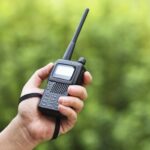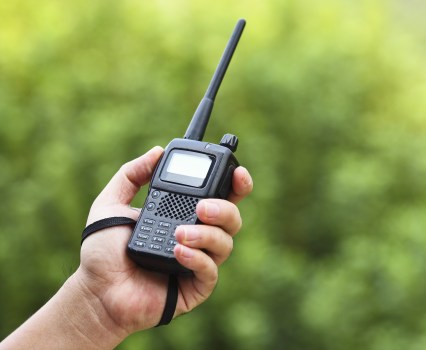In my last post, I offered some tentative thoughts about the applicability of the Convention on Conventional Weapons (CCW) to the recent pager and walkie-talkie strikes with some lawyerly hedging about the uncertainty of facts on the ground. On Sunday, the Washington Post offered substantially more details about the pagers and walkie-talkies gleaned from interviews with a wide variety of security officials, politicians, diplomats, and people close to Hezbollah. These new details help clarify the answers to some previous questions about the CCW and add new emphasis to additional questions about the International Humanitarian Law (IHL) prohibition on unnecessary suffering. I will address each in turn.
1. Were the pager and walkie-talkie strikes covered by Amended Protocol II of the CCW?
Assuming the truth of the new details, the Washington Post disclosures make clear that the pagers and walkie-talkies satisfy the first part of the “booby-trap” and “other devices” definitions. By way of reminder, the CCW defines a booby-trap as “any device or material which is designed, constructed or adapted to kill or injure and which functions unexpectedly when a person disturbs or approaches an apparently harmless object or performs an apparently safe act” and other devices as “manually-emplaced munitions and devices designed to kill, injure or damage and which are actuated by remote control or automatically after a lapse of time.” In the last post, I floated the possibility that the strike’s primary purpose could have been to target the communication devices themselves, rather than to target the Hezbollah possessors of the devices. That possibility no longer seems tenable to me based on the combination of one new detail from the Washington Post and two old ones. First, an (unnamed) official says the first set of pager explosions were designed to disrupt the fighting capacity of Hezbollah fighters. The earliest pager explosions were set in motion by a notification of an encrypted message. The devices did not explode unless the user pushed two buttons. As users were likely to use two hands to push both buttons, the explosion would wound both hands rendering the recipient incapable of fighting. Second, while the soon-to-follow pager explosions and the next-day walkie-talkie explosions did not require the user’s hands, they did occur during the day—a time the users would likely have the devices on them rather than on a nightstand or elsewhere while sleeping. Third, after reading my first post, a reader more conversant in explosive charges than I suggested that even though the Washington Post says that pagers used a “tiny amount of a powerful explosive,” even less could have been placed in pagers and walkie-talkies if the first order or only purpose of the explosions was to destroy the communication devices.
My thinking has also evolved on the question of “booby-trap” or “other device.” As the first pager strikes required the possessor to push buttons in order to read an encrypted message, the pagers were “booby-traps” as they functioned unexpectedly when a person performed the apparently safe act of reading an encrypted message. The user had no notice pushing the two buttons would cause the device to explode. Assuming all pagers had this capacity, they were all booby-traps by definition, though not all exploded by this mechanism. In addition, I’m inclined to conclude the walkie-talkies, as well as the second-wave pagers, were also “other devices.” What distinguishes booby-traps and other devices is how they are actuated. The Washington Post concludes that Israel used remote control to detonate the second-wave pagers and walkie-talkies, so as long as they count as “manually-emplaced munitions,” they would satisfy the CCW’s definition of “other devices.”
2. Did the first wave of pager attacks violate the prohibition on unnecessary suffering?
We now know that the first wave of pager attacks tricked the user into attempting to read an encrypted message. Perhaps the reason so many Hezbollah members reported eye injuries is because they held the pagers up to their faces to read the message or, at the very least, had the devices aimed at their faces in a readable direction. In such a position, a detonating device would likely send fragments into the eyes of the potential reader. One possibility is that Israel designed the booby-trap with the intent to blind the user. After all, blinding fighters would definitely keep them off the battlefield permanently and require significant additional resources for rehabilitation. Or perhaps blinding was an unintended but known consequence of a booby-trip intended to kill by sending fragments into the brain through the eye. A third possibility is that Israel was seeking to blow up hands and was largely indifferent to the possibility of eye injuries. Why does it matter? Because the answer might help inform a determination of whether the first pager strike violates the IHL prohibition on unnecessary suffering and superfluous injuries.
The prohibition on unnecessary suffering and superfluous injuries in armed conflict is a long-standing one. First appearing in modern treaties such as the St. Petersburg Declaration, the agreement both banned a particular weapon and articulated the notion that weakening the forces of the enemy is legitimate and for that purpose, “it is sufficient to disable the greatest possible number of men” but also that “this object would be exceeded by the employment of arms which uselessly aggravate the sufferings of disabled men, or render their death inevitable” and thus using weapons that cause such suffering would be “contrary to the laws of humanity.” Subsequent treaties banned specific weapons such as dum-dum bullets and asphyxiating gas based on the same reasoning. Both the Hague Declaration and the Geneva Convention contain a prohibition on unnecessary suffering and superfluous injuries. The ICRC concludes that this prohibition has reached the status of custom for both international and non-international armed conflict. More recent treaties, such as the landmine ban and the Additional Protocols to the CCW are also rooted in this IHL principle.
But how do we know if a weapon causes superfluous injury or unnecessary suffering? As mentioned in the prior post, neither the CCW nor any other treaty per se bans booby traps or other devices, though Article 3(3) of Amended Protocol II to the CCW does “prohibit[] in all circumstances to use any mine, booby-trap or other device which is designed or of a nature to cause superfluous injury or unnecessary suffering” (emphasis added). This language, whether it reaffirms or adds to prior custom and treaty law, makes clears that either a purpose to cause or a significant likelihood of unnecessary suffering would suffice to trigger the prohibition. So how should that be applied to the pager and walkie-talkie strikes? I start with what information we have about the injuries (and assuming it to be true). News reports suggest about 3,500 individuals injured in total. Lebanon’s health minister said, “Of some 1,800 people who were admitted to hospital, . . . 460 needed operations on their eyes, face or limbs, particularly the hands.” Local reports suggest at least 300 victims have been left blinded. An ophthalmologist in Lebanon reports that of the 40-50 strike patients he treated in the Advanced Eye Care Hospital, every one lost at least one eye, with many losing both. We do not yet have disaggregated data on any difference on rates of specific injuries as between those who were injured in the encrypted pager strike, the remotely detonated pager strike, and the walkie-talkies. I think the most troubling case for Israel would be if we learn that Israel intended to cause blindness with the pager attack. But even in the absence of such information, I would also be concerned if it turns out that both (a) most or even many eye injuries are to those that tried to read the encrypted messages and (b) that most of those who tried to read the encrypted messages, suffered eye injuries. In that instance, it seems fair to say that the dual-button push to read an encrypted pager message method of detonating a booby-trap is of a nature to cause eye injuries and/or blindness.[1]
But even if we determine that the pagers detonated by pressing buttons were of a design or a nature to cause eye injuries or blindness, we still must determine whether such injuries constitute unnecessary suffering or superfluous injuries. Many states, including the United States, emphasize that the rule requires a balancing of military necessity and expected injuries, which would require the state to determine how significant the military advantage and weigh that against the likely injuries. The United States, and I suspect many other states, would and should also consider the availability of alternative means (and their comparable effectiveness) as relevant to a determination of whether a weapon causes unnecessary suffering or superfluous injury.
So how do those considerations pan out here? The military advantage of rendering members of Hezbollah unable to fight and dismantling part of their communications network is very substantial, particularly in light of an anticipated ground operation. While that side of the ledger appears quite significant, it may become less so in light of possible alternate means to achieve the same military objective. One obvious alternate means would be the remote detonation of pagers as Israel did with the second wave of strikes. Ostensibly, such a strike would be much less likely to cause eye injuries or blindness as the devices would be substantially less likely to be aimed at the users’ faces. As Israel had the capability to eavesdrop on the communications network via the walkie-talkies and possibly the pagers as well, it could probably have picked a time when no mass messages were being sent or likely to be read. But without all the facts, I remain open to the possibility that the remote strikes are equally likely to cause similar eye injuries. Once the military objective side of the ledger is determined,[2] then we need to look at the suffering and injury side of the ledger. One important consideration is the inevitability of serious permanent disability which would weigh heavily in favor of superfluous injury or unnecessary suffering. Such concern underpins both the Landmine ban and Protocol IV of the CCW which bans blinding laser weapons in certain usages.[3] But notably the Amended Protocol allows that booby-traps can be used lawfully, but are prohibited specifically when they are “designed or of a nature to cause superfluous injury or unnecessary suffering” (emphasis added). Once we have more facts about how likely the first-wave pagers were to cause significant eye injuries (and as compared to the second-wave pagers), we can start comparing them to other weapons identified by the ICRC as potentially prohibited in some or all contexts under this principle including:
lances or spears with a barbed head; serrated-edged bayonets; expanding bullets; explosive bullets; poison and poisoned weapons, including projectiles smeared with substances that inflame wounds; biological and chemical weapons; weapons that primarily injure by fragments not detectable by X-ray, including projectiles filled with broken glass; certain booby-traps; anti-personnel landmines; torpedoes without self-destruction mechanisms; incendiary weapons; blinding laser weapons; and nuclear weapons.
We also ought to compare them to other weapons not considered per se unlawful, but that cause similar injuries, such as grenades and other fragmenting devices, along with the contextual dividing lines between the lawful and unlawful usage of such weapons.
Conclusion
While I am not ready to draw definitive conclusions on the unnecessary suffering question, the Washington Post report has shed some important light on the pager attacks and points in the direction of what a future legal investigation or inquiry ought to dig into.
[1] One might do a similar assessment for the finger injuries as these may also constitute permanent disabilities, but I think the eye injuries are the stronger case.
[2] This assumes, without taking a position, that all those who received pagers are legitimate military objectives.
[3] Notably the ban only applies to laser weapons prohibited to employ laser weapons specifically designed, as their sole combat function or as one of their combat functions, to cause permanent blindness to unenhanced vision.
#Israels #Pager #WalkieTalkie #Strikes #Part #Lesley #Wexler #Verdict










